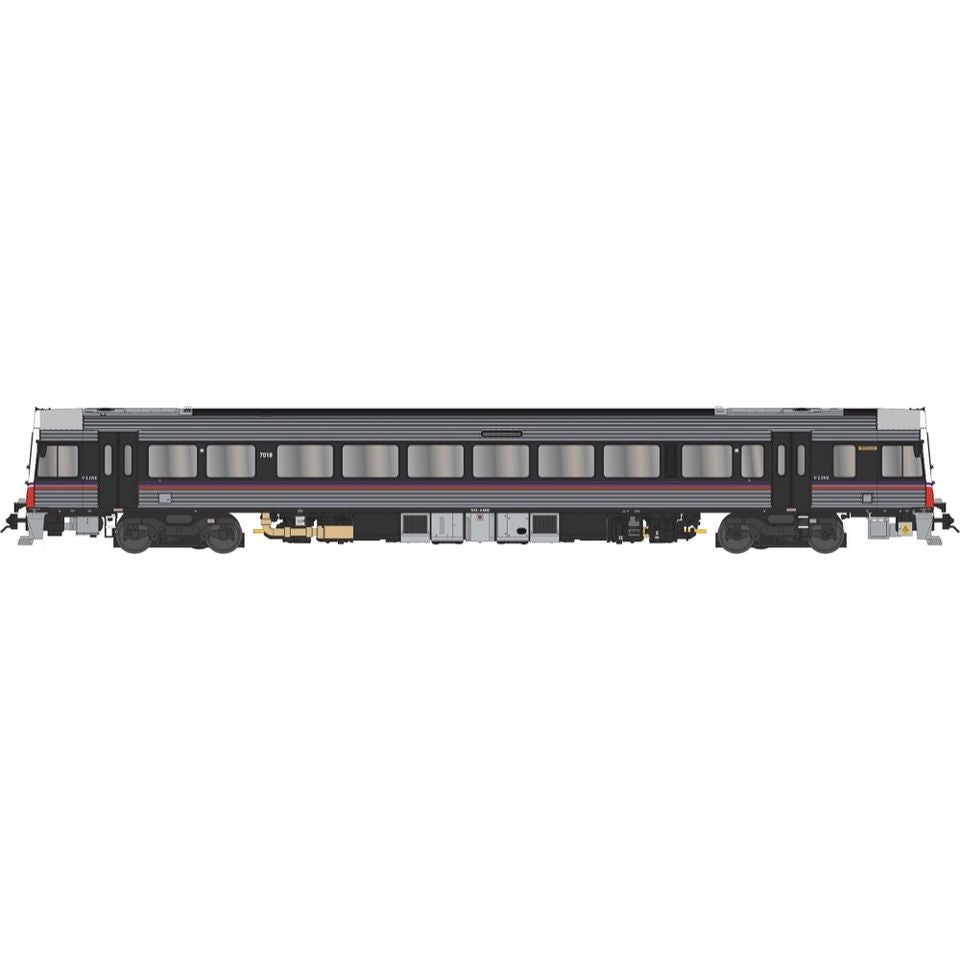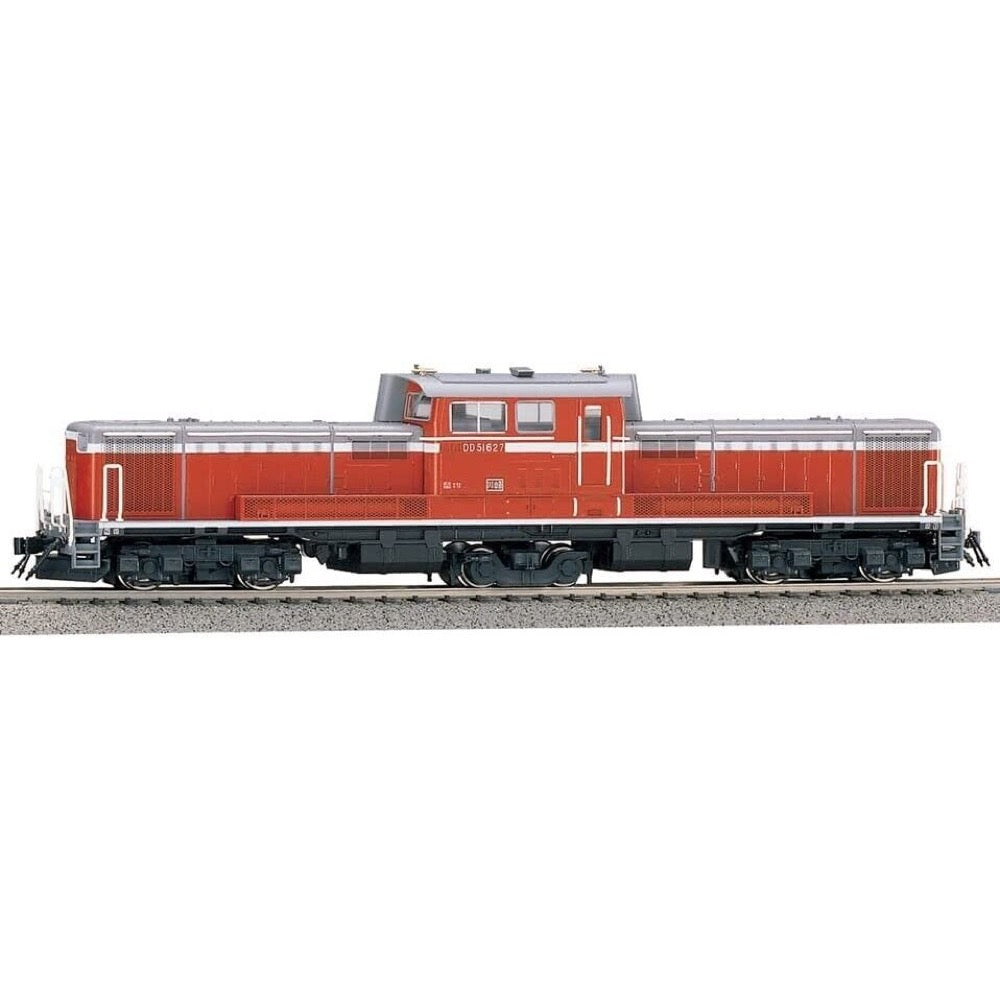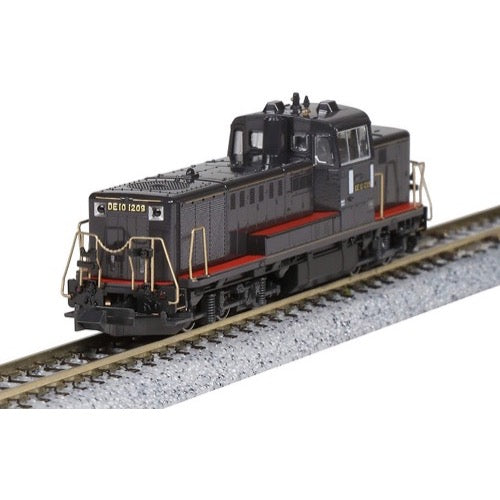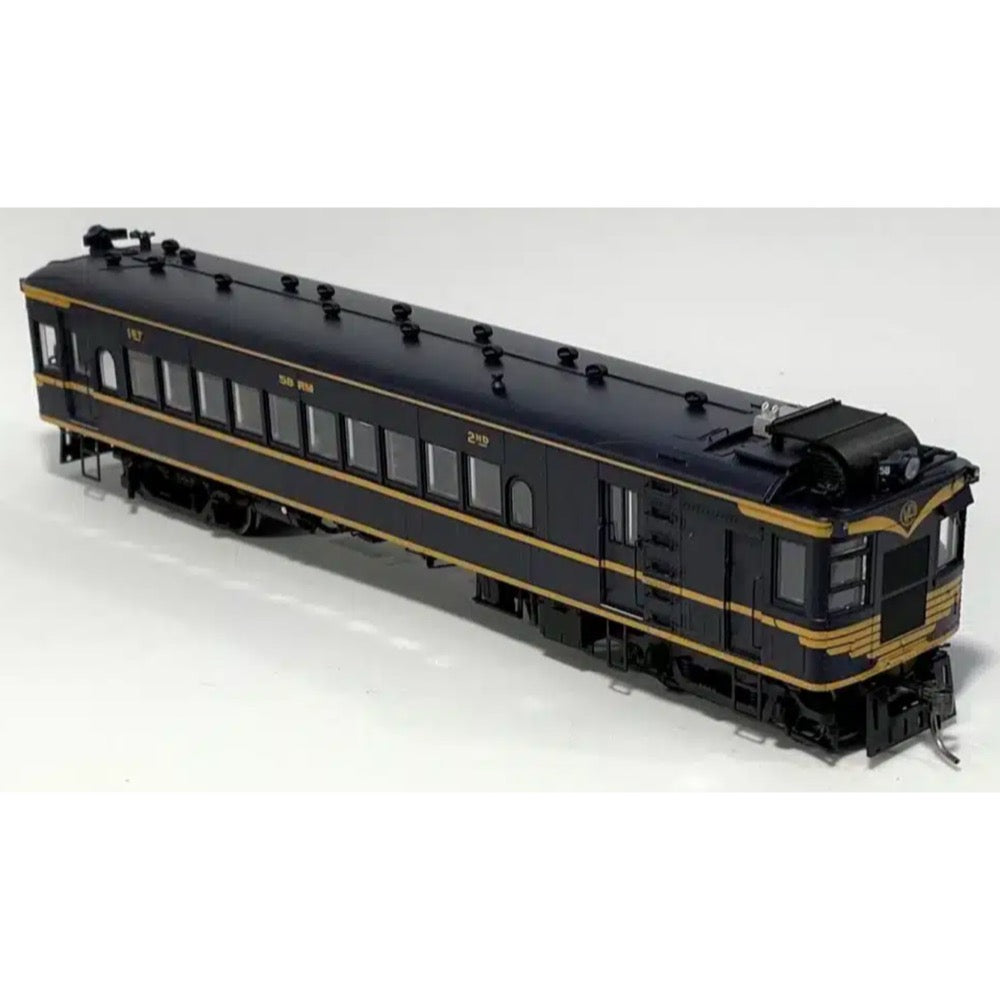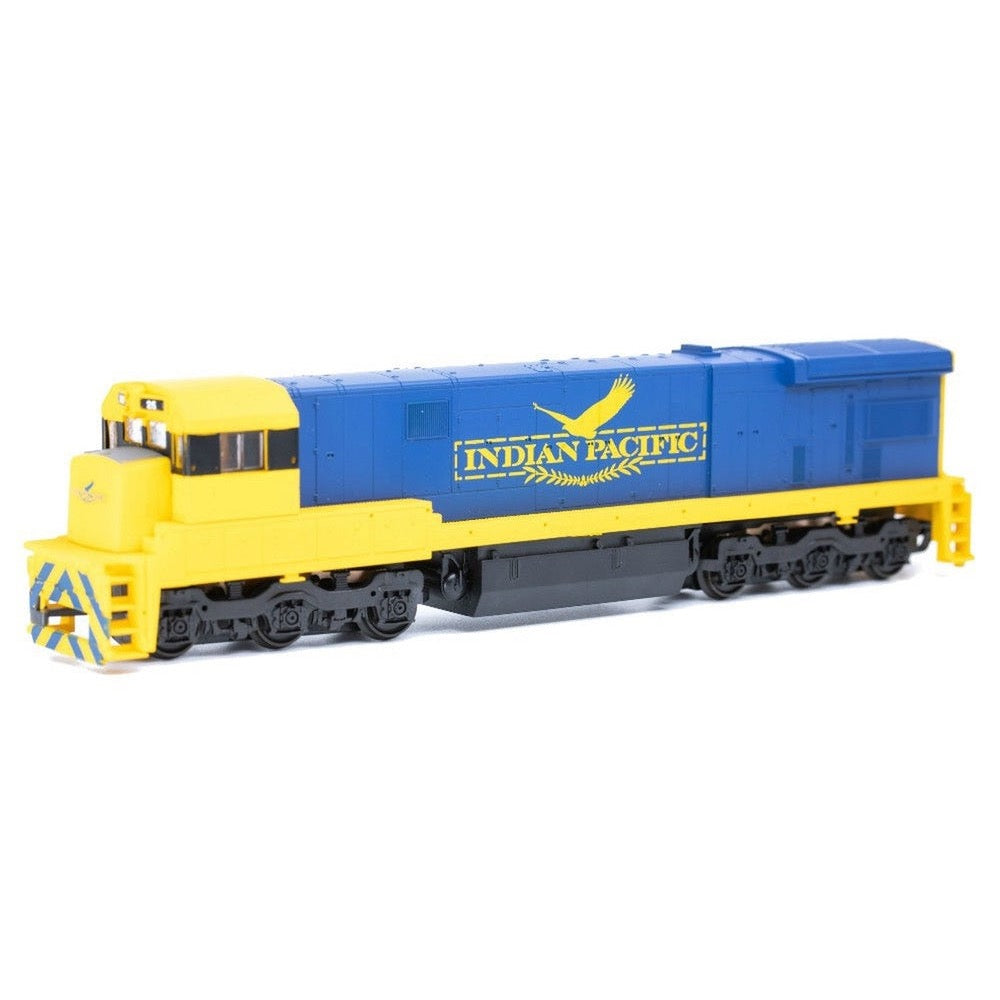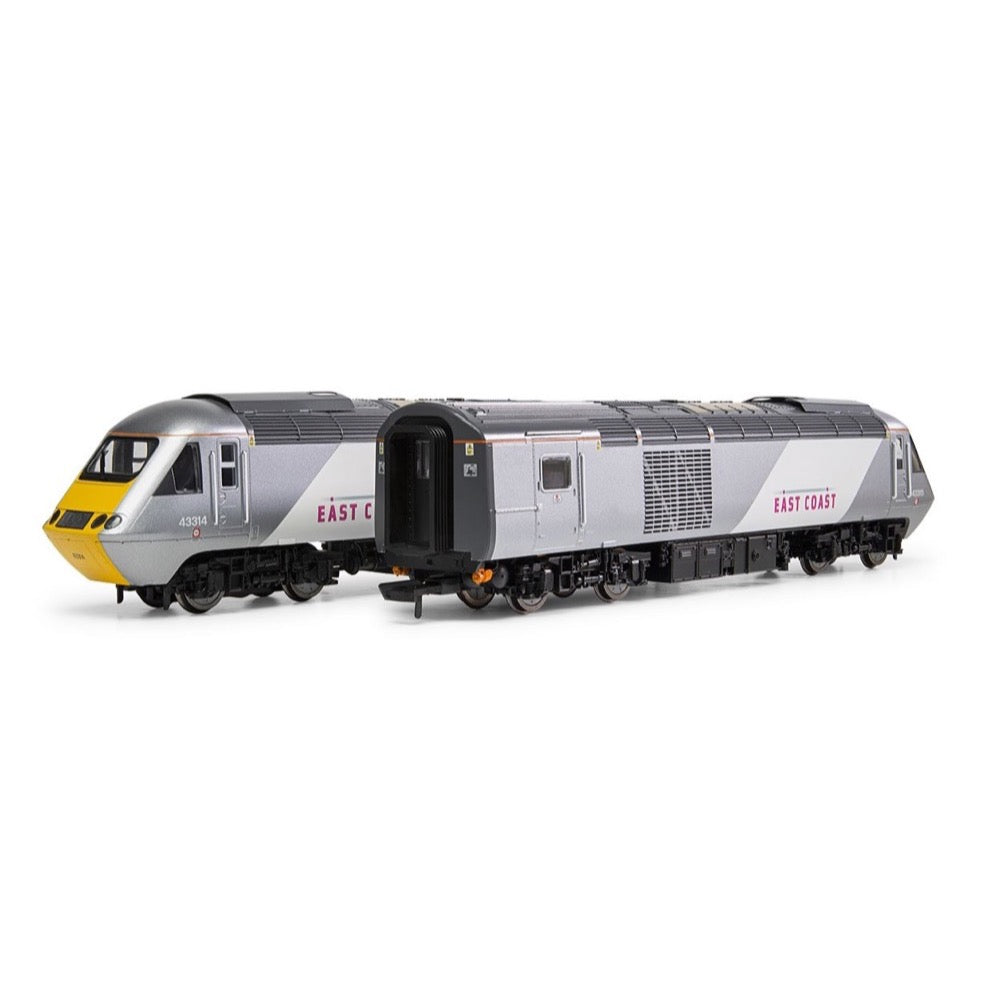
Hornby R30099 OO East Coast Trains Class 43 HST Train Pack
Following a period of unprofitable operations, the InterCity East Coast franchise and associated HST units passed from NXEC to East Coast, an operator owned by the Department for Transport. From the beginning of East Coast’s operations, it was made clear that it was the DfT’s intention was that the franchise be retendered in future years. To this end East Coast soon adopted a deliberately plain livery that would be easy for a new operator to re-brand. The franchise eventually passed to Virgin Trains East Coast in March 2015.
43008 entered service in 1976 working in the western region. After privitisation it briefly remained in the west serving with Great Western Trains before being transferred to GNE. 43008 was overhauled and fitted with a new MTU power unit between July and October 2008, being re-numbered 43208 and later named ‘Lincolnshire Echo’.
43115 entered service in 1979 and worked on the East Coast mainline. The power car, having been inherited by GNER, was overhauled and fitted with it’s new MTU engine between November 2007 and February 2008.
Formation:
- Class 43 – 43208 – R30099
- Mk3 TGS – 44061 – R40245
- Mk3 TS – 42193 – R40247
- Mk3 TS – 42192 – R40247A
- Mk3 TS – 42191 – R40247B
- Mk3 TSD – 42238 – R40243
- Mk3 TS – 42158 – R40247C
- Mk3 TRFB – 40750 – R40246
- Mk3 TFD – 41098 – R40244
- Mk3 TF – 41097 – R40368
- Class 43 – 43315 – R30099
Specification
- Item Length - Without Packaging (cm): 23.5
- Item Height - Without Packaging (cm): 5
- Item Width - Without Packaging (cm): 3.5
- Item Weight - Without Packaging: 0.71
- Item Scale: 1:76 Scale 00 Gauge
- Finish: Painted
- Colour: Grey
- DCC Status: DCC Ready 21 pin socket
- Operator: East Coast Trains
- Designer: Sir Kenneth Grange
- Livery: East Coast Grey
- Minimum Curve (mm): Radius 2
- Motor: 5 Pole Skew wound
- Number of Parts: 2
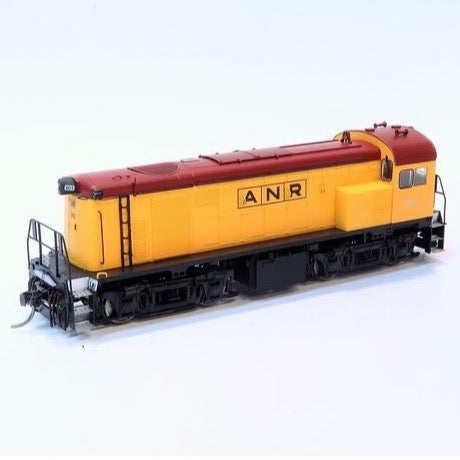
SDS Models HO 803 ANR Yellow 800 Class Locomotive DCC Sound
Entering service from the mid 1956 onwards these 10 English Electric 750 HP shunting locomotives were numbered from 800 to 809. They were predominantly found working around Port Adelaide and in particular Gilman Yard. Later and from time to time they could also be found working Passenger trains around the suburbs. They remained in service until the late 80s and some units through until 1991, all except 801 were scrapped. When AN commenced operations the class leader 800 was renumbered to 810.
Features
- Highly detailed Ready-to-Run HO gauge model
- Precisely tooled plastic body (ABS)
- Genuine Kadee scale head whisker coupler
- Separately applied handrails and detail parts
- 5-Pole skew wound electric motor and dual flywheels
- All wheel drive and electrical pickup
- LED head and marker lights, body mounted
- All models come standard with an MTC 21 pin motherboard
- Exclusive sound by DCCSound
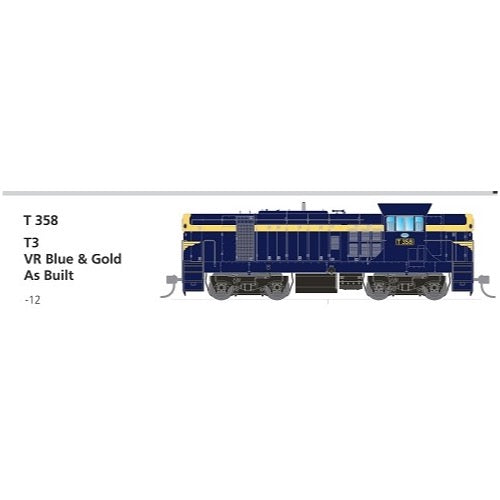
SDS Models HO T358 VR Blue & Gold T3 Series T Class Locomotive
SDS Models HO T358 VR Blue & Gold T3 Series T Class Locomotive
The Victorian Railways received their second series of T class locomotives from late 1959, these were mechanically similar to the first series but featured a new raised height operating cab layout. This new style of raised cab design featured throughout the remainder of the T class series.
SDS Models are pleased to offer the inclusion of the T-2 series within their range of Victorian Railways T class models.
Based upon the tried and proven Austrains T class mechanism, SDS Models have comprehensively retooled almost every item, bringing the model inline with their exacting scale and design standards. Some 220 new or re-made parts are involved in the production of the four series.
All the models now feature prototypically correct width long hoods, series specific and appropriate fuel tank and battery box combinations, improved appearance bogie side frames and brake shoe / wheel tread alignment and a host of other design detail enhancements.
Model Features:
- Highly detailed Ready-to-Run HO gauge model
- Precisely tooled plastic body (ABS)
- Genuine Kadee scale head whisker coupler
- Separately applied handrails and detail parts
- 5-Pole skew wound electric motor and dual flywheels
- All wheel drive and electrical pickup
- LED head and marker lights
- All models come standard with an MTC 21 pin motherboard
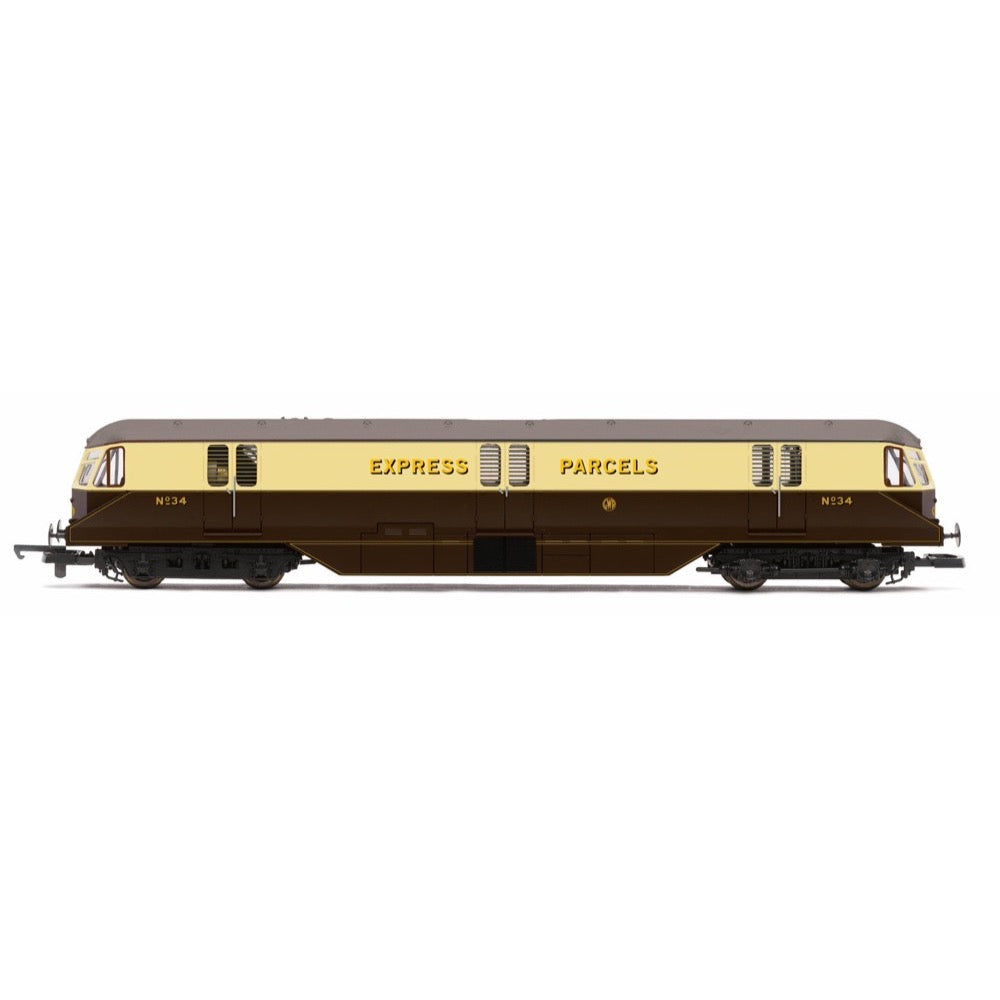
Hornby R30384 RailRoad Plus GWR Bo-Bo No. 34 Parcels Car (Era 3)
Hardy Railmotors Limited were a subsidiary of the Associated Equipment Co. Ltd and offered petrol and diesel engine shunting locomotives. C.F. Cleaver, an engineer employed by Hardy Railmotors, realised that the successful 130 bhp 6-cylinder AEC diesel engine used in London buses would be suitable for powering a lightweight railcar. The first railcar was a prototype, No. 1, and the body was based on the popular DB diesel unit called ‘Flying Hamburger’. After wind tunnel tests, the body was streamlined, which earned them the nickname ‘flying bananas’.
The railcar was bought by GWR and soon, No. 1 was displayed at the International Commercial Motor Transport Exhibition at Olympia in November 1933, to much fanfare and great publicity. GWR ordered more railcars and a total of 38 diesel railcars were constructed between 1933-1942. In service for various purposes, ranging from branch-line working to twin-set rail cars working the Birmingham to Cardiff service, these railcars were unique to the main line. Eventually, the railcars were withdrawn from service between 1955 and 1962. Three railcars are preserved: No. 4 at the National Railway Museum, No. 20 at the Kent & East Sussex Railway and No. 22 at the Didcot Railway Centre.
No. 34 was an express parcels railcar and entered service in 1941. The railcar had a capacity of a 10-ton load for each journey. Double-hinged doors were a feature on the railcar. No. 34 operated from Southall until it was withdrawn in 1960. It was considered an efficient railcar due to the car’s trailer-hauling capacity.
The GWR No. 34 Express Parcels Car model is finished in a GWR cream and brown livery.
Specification
- Item Length - Without Packaging (cm): 24
- Item Height - Without Packaging (cm): 5
- Item Width - Without Packaging (cm): 4
- Item Weight - Without Packaging: 0.25
- Item Scale: 1:76 Scale 00 Gauge
- Finish: Painted
- Colour: Multiple
- Gauge: OO
- Operator: GWR
- Designer: GWR
- Wheel Configuration: Bo-Bo
- Livery: GWR
- Minimum Curve (mm): Radius 2
- Motor: 3 Pole
- Number of Parts: 1
- Buffer Type: Separate Plastic Buffers
- Coupling Type: Wide Tension Lock
- Hornby Decoder Compatibility Primary: HM7000-8TXS: Bluetooth® & DCC Sound Decoder (8-pin)
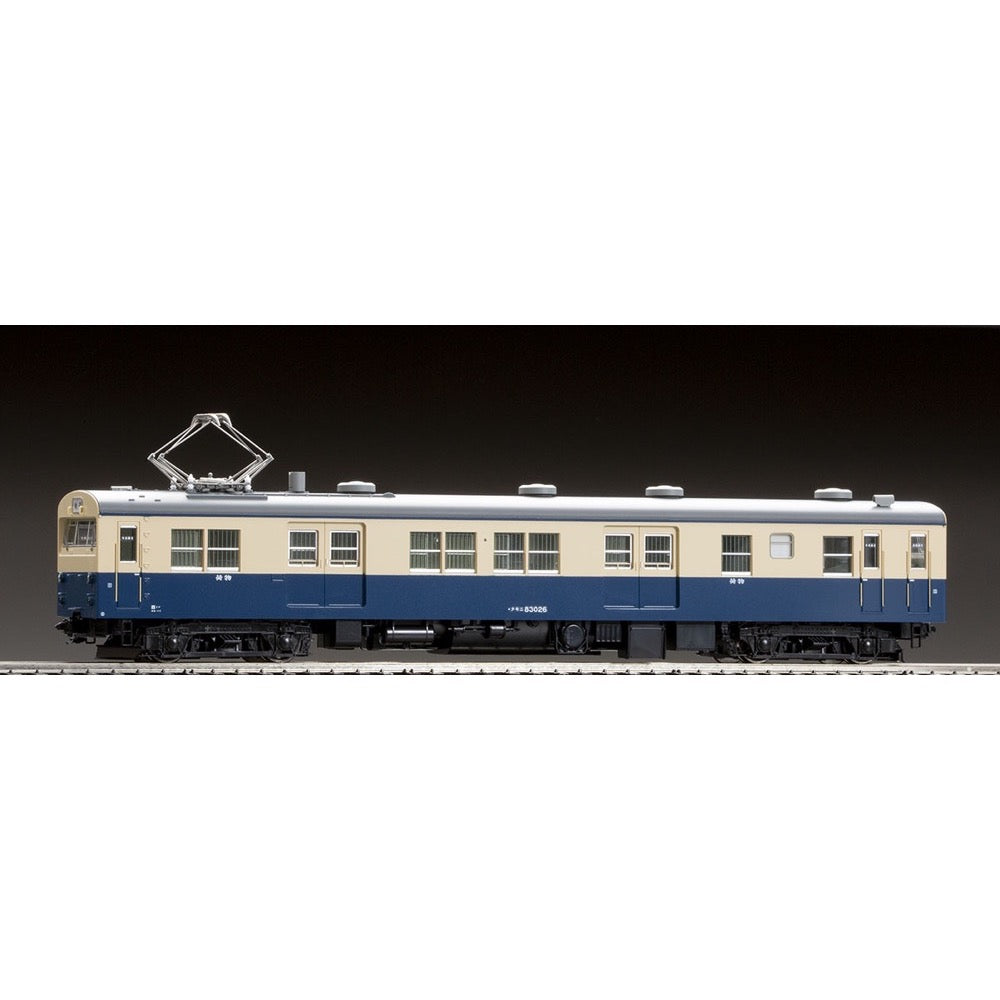
Tomix 56022 HO KUMONI 83-0 Yokosuka Color M
This freight train was converted from the old 72 series and was introduced in 1966.
The front design was similar to the high cab of the 103 series.
The cars used on the Chuo Line were equipped with PS23 pantographs and were painted in Yokosuka colors, just like the 115 series on the same line.
Features
- The lightning arrester position and toilet window position, which are different from the Shonan color, have been newly reproduced
- Equipped with a PS23 pantograph
- The front display is interchangeable and comes with printed parts for "Shinjuku", "Takao", "Kofu", "Matsumoto", "Nagano", and "Baggage"
- The headlights are illuminated by incandescent LEDs, and the taillights are illuminated by red LEDs
- The front display is illuminated by white LEDs
- The head and taillights and front display are illuminated on both sides and have an ON-OFF switch
- Side indicator lights are already installed
- A ventilator with a diagonal edge is installed
- A snowplow is installed on the front side of the bogie
- The car number is selectable and a transfer sheet is included
- "Baggage" and ATS notation are printed
- The protective bars on the side windows are reproduced in a light green print from the back
- Equipped with a close-coupled TN coupler
- Can pass through a minimum radius of R490 (excluding S-shaped linear tracks)
Contents
Vehicles
- Kumoni 83-0 (Yokosuka color) (M)
Accessories
- Runner parts: Front display section
- Runner parts: Whistle, signal flare
- Runner parts: Handrail (cream)
- Runner parts: Handrail (blue)
- Runner parts: Step
- Runner parts (etching): Wiper
- Parts: Jig
- Transfer sheet: Vehicle number, etc.
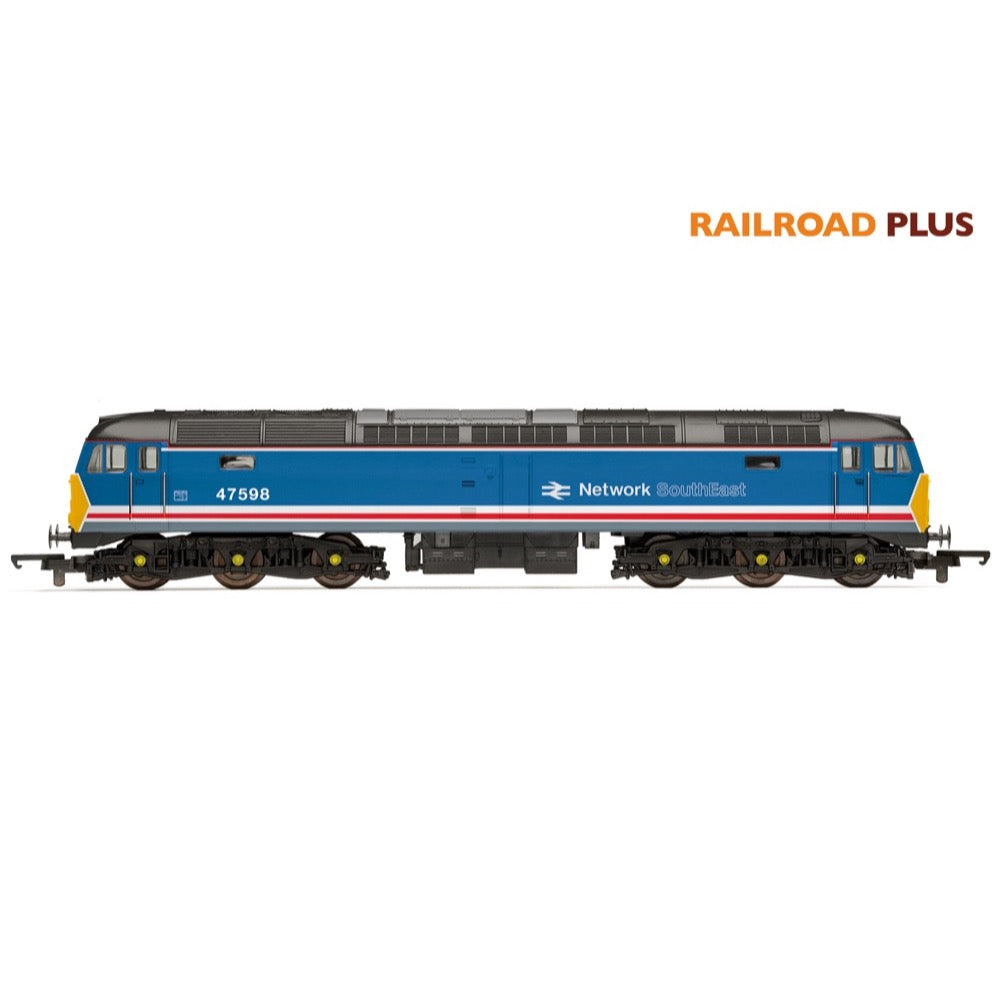
Hornby R30187 OO RailRoad Plus NSE Class 47 Co-Co 47598
The British Rail Class 47 is a class of British railway diesel-electric locomotive that was developed in the 1960s by Brush Traction. A total of 512 Class 47s were built at Crewe Works and Brush's Falcon Works, Loughborough between 1962 and 1968, which made them the most numerous Class of British mainline diesel locomotive. They were classified as Type 4s.They were fitted with the Sulzer 12LDA28C twin-bank twelve-cylinder unit producing 2,750 bhp (2,050 kW) - though this was later derated to 2,580 bhp (1,920 kW) to improve reliability - and have been used on both passenger and freight trains on Britain's railways for over 50 years. Despite the introduction of more modern types of traction, a significant number are still in use, both on the mainline and on heritage railways. As of October 2016, 81 locomotives still exist as Class 47s, with further examples having been converted to other classes; 30 retain "operational status" on the mainline.By 1986, only five of the original 512 locomotives had been withdrawn from service, all because of serious accident damage. However, with work for the Class declining due to the introduction of new rolling stock and spare parts becoming difficult to source, some inroads started being made.The first locomotives to be targeted were the non-standard pilot batch of 20, now numbered 47 401-47 420. Three locomotives were withdrawn as life-expired in February 1986 and the remainder of the batch that had not recently been overhauled followed in the next two years. All 20 were withdrawn by 1992.Meanwhile, BR drew up a 'hit-list' of locomotives for early withdrawal, mainly including those with non-standard electrical equipment, known as series parallel locomotives. In the outset, withdrawals were slow, mainly due to the surplus of spare parts and new flows of freight traffic which required extra locomotives; only 61 locomotives had been withdrawn by the end of 1992. However, with the introduction of new locomotives, the rate of withdrawal quickly rose, with 86 more 47s reaching the end of their lives in the next three years. With most of the non-standard locomotives withdrawn, the reduction of the fleet again proceeded more slowly. The privatisation of British Rail also produced new independent rail companies needing available traction until they could order new locomotives. From 1996 to 2006, an average of around fifteen locomotives per year were taken out of service.
Specification
- Item Length - Without Packaging (cm): 25.1
- Item Height - Without Packaging (cm): 5
- Item Width - Without Packaging (cm): 3.5
- Item Weight - Without Packaging: 0.23
- Item Scale: 1:76 Scale 00 Gauge
- Finish: Painted
- Colour: Blue
- DCC Status: DCC Ready 8 pin socket
- Operator: NSE
- Designer: Brush Traction
- Livery: NSE Revised
- Minimum Curve (mm): Radius 2
- Motor: 5 Pole Skew wound
- Number of Parts: 1
- Class: Class 47
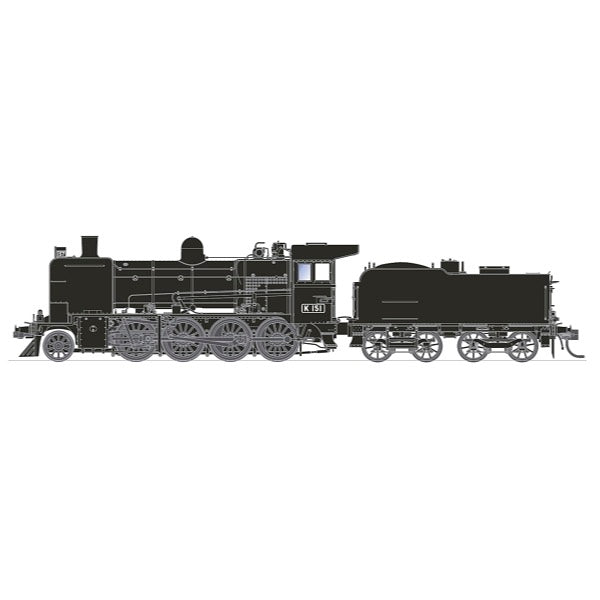
Phoenix Reproductions HO K151 Victorian Railways K Class Locomotive DCC Sound
The Victorian Railways built 53 K class engines at Newport Workshops over a 24 year period, commencing in 1922. The first series of 10 engines were progressively rebuilt in the 1940s to match the performance and visual appearance of the other class members. Later in 1946 the last 9 engines entered service, these engines had single cab side windows and the last 7 engines were fitted Boxpok style driving wheels.
They were extremely versatile engines and could be found and all classes of trains, many worked until the late 1960s and several into the early 1970s.
The Phoenix Reproductions model represents the class in it's later years of government service as well as several colourful liveries of early days preservation.
Features
- Highly detailed Ready-to-Run HO gauge model
- Diecast boiler, frame and footplate
- Genuine Kadee scale head whisker coupler (Tender)
- Separately applied boiler details
- Working LED lights
- All models come standard with an MTC 21 pin motherboard
- Keep Alive Circuit
- DCC version with LokSound V5 decoder
- 22" Minimum Radius


